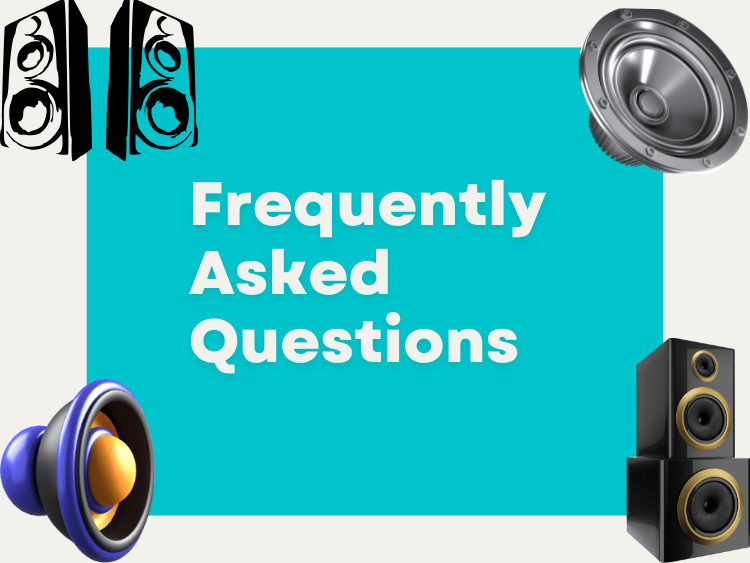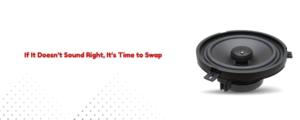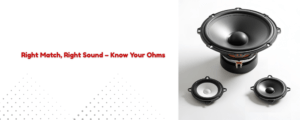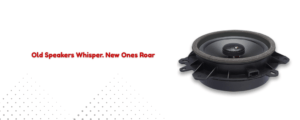If you’re an expert, a fan of car audio, or someone who is trying to fix an old sound system, changing a speaker can be both fun and hard to understand. It’s normal to have questions when there are so many types, specs and worries about connectivity. This guide answers the 10 most common questions about replacement speakers so you can make smarter decisions and learn more about the world of audio repair, speaker troubleshooting, and upgrades.
1. How often should I get a new speaker?
If a speaker stops working right or has damage that you can see, you should get a new one. Some common signs are:
- Sound that is distorted or crackling
- One or more stations don’t sound
- Damage to the cone or its surroundings
- Noises like buzzing or rattling
These are some of the most common speaker problems people experience. People sometimes get new speakers not because the old ones are broken but because they want better sound or a newer model.
2. Can I just change one speaker, or do I need to change them all?
Just swap out one speaker if that’s the only one that’s broken. But to get the most consistent sound, it’s best to change speakers in pairs, especially if they’re part of a stereo system. Mismatched speakers may vary in tone, volume, and clarity.
In car or home movie systems, changing all speakers together provides smooth music across all channels.
3. How can I tell if a new speaker will fit?
Fit depends on a few key factors:
- Speaker size (diameter): Common sizes include 4″, 5.25″, 6.5″, and 6×9″.
- Mounting depth and width: Make sure the speaker fits inside the case without getting in the way of other parts.
- Pattern of screw holes: The mounting holes should line up with how things are set up now.
- Impedance and power compatibility: For best performance, make sure the electrical specs match your system.
That’s why you should use a chart or call the maker to be sure.
4. What is impedance, and why does it matter?
Impedance, which is measured in ohms (Ω), tells you how much a speaker blocks the sound wave. The most common amounts are 4, 6, and 8.
Why it’s important:
- Your amp needs to have the same voltage as your speakers.
- If you use a speaker with a smaller voltage than what your system can handle, it could get too hot and damage your amplifier.
- A higher resistance may lower sound output but won’t generally hurt equipment.
To keep performance and safety, always match or stay within the range that is suggested.
5. What’s the difference between a full-range speaker, a tweeter, and a woofer?
- Woofer: Made to play low-frequency sounds, like bass.
- Tweeter: Takes care of high-pitched sounds (treble).
- Midrange: Plays sound waves in the middle of the range.
- Full-range speaker: All sounds are mixed into one driver. It can be used for many things, but it might not be as clear as a multi-driver system.
If you know the type, you can choose the right fix for your sound system.
6. Is it hard to put in new speakers?
How hard it is to install varies:
- OEM replacements (drop-in replacements): Simple and generally just plug and play.
- Upgrades from the aftermarket: You might need to cut, drill, connect, or use adapter tools.
Things you might need:
- Forks and spoons
- Wire shears and cuts
- Crimp connections or a soldering iron
- Using rings or clips to mount
For popular car or home audio sets, there are a lot of how-to tips and movies online that you can use to install things yourself as part of your speaker troubleshooting process.
7. Does getting new speakers make the sound better?
Yes, especially if the speakers that came with your car are old, broken, or not very good. New speakers can improve:
- Clarity and specifics
- Response in bass
- Dealing with volume
- The overall range of sound
To get the most out of the changes, use a good amp or head unit with your new speakers and make sure the area is properly soundproofed. Investing in the best replacement speakers can bring a huge improvement to your audio experience.
8. What’s the Difference Between Original Equipment Manufacturer (OEM) Speakers and Aftermarket Speakers?
- OEM (Original Equipment Manufacturer): The same speakers that came with the car when it was bought. They are great as straight replacements and keep the sound of the originals.
- Aftermarket: Better performance, more tuning options, and different sound settings. Options from well-known brands like JBL, Pioneer, Infinity, and Rockford Fosgate.
If you’re looking to stock the best replacement speakers for your store or flea market booth, partnering with 5 Core could be a smart move. Most of the time, aftermarket speakers are best replacement speakers for upgrades, while OEM speakers are better for repairs and restoration.
9. How much should I spend on new speakers?
Prices change based on name, quality, and use:
- Budget (less than $50): Good enough for simple repairs or backups.
- Upper-middle ($50–$150): Better sound, better materials, great for home and car changes.
- High-end ($150+): High-quality parts, sound quality for audiophiles, and long-lasting reliability.
Make sure that your budget and your realistic goals are in sync. Sometimes spending a little more makes a big difference in how good the sound is.
10. What store can I buy new speakers from?
Here’s where you can find new speakers:
- Online stores: Amazon, Crutchfield, Parts Express, Sonic Electronix
- Brand websites: JBL, 5Core, Polk Audio, KEF, and more
- Electronics shops: Best Buy, Fry’s (in the U.S.), or local stores
- Auto audio specialists: For setups and customizations for your unique car
- Repair shops: Sometimes sell used or repaired speakers for less money
Before you buy, read reviews and look at the speaker’s specs. Also, make sure the speaker fits your wants.
Last Thoughts
It doesn’t have to be hard to find a new speaker. You can make smart choices that improve your music experience if you know the basics, like fit, connectivity, type, and purpose. You can use these top 10 replacement speaker FAQs to get started, whether you want to fix a broken speaker or get a new one. As speakers keep getting better and more people care about the environment, changing them isn’t just a fixed job. It’s now a way to customize your sound, cut down on waste, and make sure your favorite audio systems keep working for years to come.





